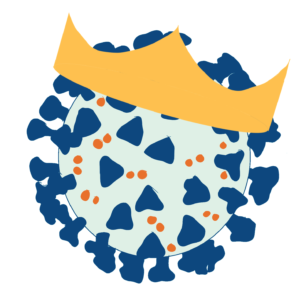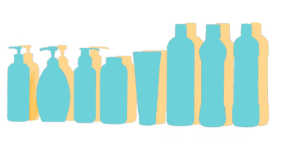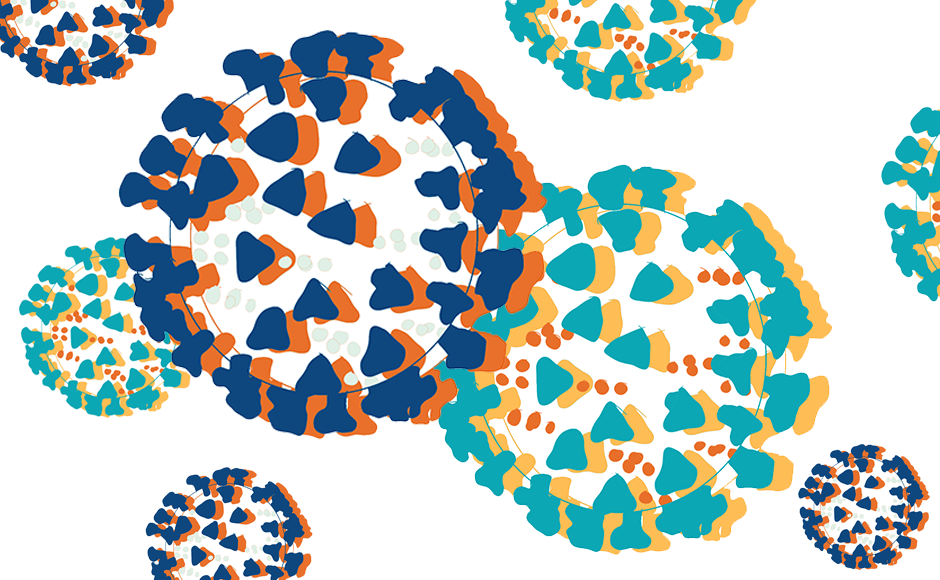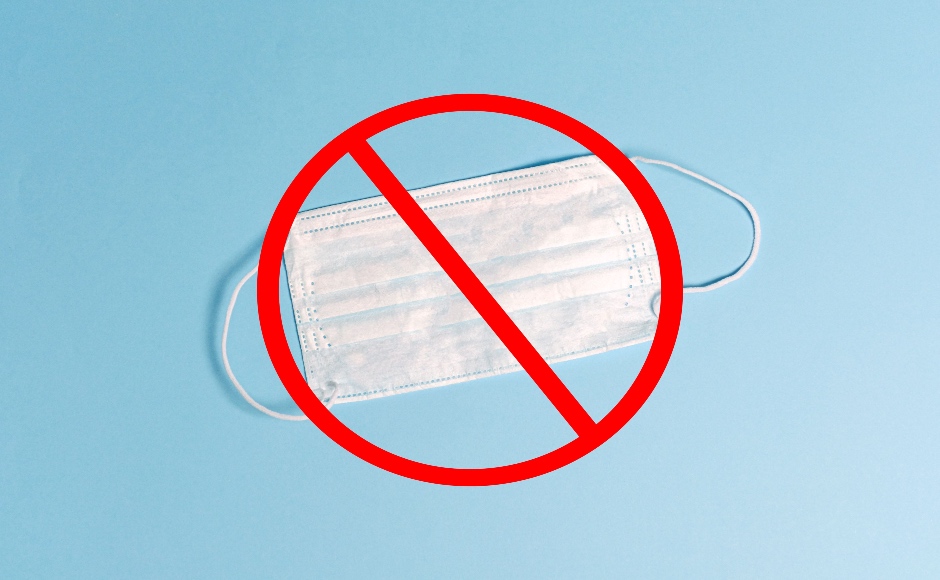Illustrations by Angele Latham
Amidst all of the chaos, misinformation, and the general upheavery surrounding COVID-19, it’s hard to tell what the truth is and what is not. And yeah, there’s a lot going on. Most of us can confidently say that we have never been through a pandemic before—much less one that is threatening enough to encourage self-isolation and move classes remotely for the foreseeable future. It’s confusing, it’s messy, and it can be a little bit scary.
Guess what? That’s why Sidelines is here for you.
So for all of you suddenly laptop-bound students and self-isolating scholars who are surrounded by hoarded soups and possibly piles of toilet paper (please stop hoarding toilet paper, y’all) here is a constantly-updating toolkit for staying well in this trying time.
(All virus-related information in this article is straight from the CDC, and will be updated accordingly. Your author, however, is not a doctor—if you are feeling unwell or are uncertain about your health, please call your doctor.)
Stay with us kids—we’ll make it!
Coronavirus: The Basics
You’ve heard the name everywhere by now: coronavirus. But what is it actually? Coronaviruses are actually a family of viruses which are known for strains that can affect a variety of animals, including mammals. The strain we are struggling with right now is known as COVID-19. Some other strains include SARS-Co-V-2 (where our dear COVID-19 is coming from); SARS, or “severe acute respiratory syndrome”; and MERS, or Middle East respiratory syndrome.

First studied in detail in the 1960s, coronaviruses get their names from the distinctive corona, or crown, of sugary proteins that surround the particle. Encoded in the viruses’ make-up is the longest genome of any other RNA-based viruses—according to the CDC, a single strand of nucleic acid is roughly 26,000 to 32,000 bases long.
COVID-19
COVID-19 was first identified in Wuhan, China, in late 2019. Snakes were originally suspected as the source of the outbreak, but researchers are now eyeing bats as the real patient zero. Scientists are still trying to find the animal origin of COVID-19.
Regardless of its source, COVID-19 has crippled China, with almost 90,000 confirmed cases and over 3,000 deaths. The numbers are still on the rise as China aggressively fights the outbreak.
The first case hit the United States on January 19 in Washington State, and rapidly spiraled into an outbreak: there are now 2,488 cases confirmed in the U.S, with 51 reported deaths.
How is it spread?
The virus is mainly thought to spread from person-to-person. Particularly, it’s thought to spread between people who are in close contact with each other (within 6 feet is usually considered close contact) and through respiratory droplets made when a person coughs or sneezes.

Scientists are still unsure if the germs hang out for a while on objects touched by those who are sick, so use your judgment and wash your hands after touching high-touch things.
In general, those who are most at risk are the elderly (considered 60/70 years old and up), those who are either immunocompromised, those with lung issues, heart disease or diabetes and those who are homeless. If you are not part of these demographics, congrats, but you can still catch it. And from all reports, coronavirus ranges from barely-noticeable flu-like symptoms to very-not-fun flu-like symptoms. Your best plan is to practice basic health measures and not catch it.
Additionally, even if you’re pretty sure that you will not be drastically affected by this virus, there are many around you who will be. Regardless of your immune system or strong lungs, you can be a carrier of the germ without even knowing it. Please be considerate of those around you who cannot fight off the virus—they’re counting on you to not carry it to them.
How do I prepare?
You’ve probably heard the term “social distancing” if you’ve been paying attention to anything these past few days. Basically, be prepared to get the most annoying sickness in the world: cabin fever.
That’s right. It’s time to cuddle up at home, avoid large social gatherings, and watch your health. Queue up your streaming services, get a soft blanket, gather your class supplies and religiously consume vitamins. Staying at home will help keep you safe and stop the fast spread of the virus to others. The key right now is to be prepared for any symptoms, and stay as healthy as possible in the meantime.
What do I need?
The easy way to answer this is to think about everything you need in the span of two weeks, and everything you need when you have a cold. That means food, water, toiletries, cleaning supplies, tissues, toilet paper (but don’t buy a stock pile! Save some for others!) and cold meds.

For colds medicines, make sure to have medicine that reduces fever, cold symptoms, and pain on hand.
For the poor college kid, consider getting generic-brand Tylenol and Motrin for fever and pain, labeled “acetaminophen” and “ibuprofen” respectively. There is also generic-brand Dayquil and Nyquil available, but make sure to not mix them with Tylenol or Motrin. Many cold medicines already have acetaminophen or ibuprofen in them.
For any coughing symptoms not covered by your cold medicines, purchase some tea and honey—hot tea of any sort will work, if you’re not a fan of the hard-core herbal teas. It’s the hot water and honey that will help.
Vitamins are, of course, always helpful: anything with copious amounts of vitamin C is what will really get your immune system going.
But above all, wash your hands, drink water, and stop touching your face! Your body needs water to help run your immune system, and washing your hands is the first barrier against germs. Wash for at least 20 seconds after using the restroom, wash before eating and wash after touching any high-touch surface. If soap and water are not readily available, use hand sanitizer that is at least 60 percent alcohol.
If you routinely take prescription medicines, consider contacting your healthcare provider to obtain extra medicine to have on hand, in case you can’t go out. Pharmacies are a hot bed of germs, after all.
Lastly, you do not need a face mask unless you, yourself, are sick, or you are in continued close-contact with someone who is sick. The mask will not stop germs, but it does help prevent the spread of water droplets from coughs or sneezes from you or onto you. Do not stock pile masks. There are medical providers who need them more than you.
What are the symptoms?
Reported cases of coronavirus have ranged from mild to severe symptoms, and in some cases death. The most common symptoms that often appear 2-14 days after exposure are fever, coughs, and shortness of breath.

Muscle aches and a sore throat are also common.
What do you do if you think you might be sick?
The most important thing to do is stay home and call your doctor. Students, you can call Student Health Services at 615-898-2988if you are worried you have coronavirus. Make sure you can give a detailed description of your symptoms—this will help them better understand how to help you.
If you are not sick enough to require hospitalization, then you will be asked to recover at home. Your primary care physician/Student Health Services will likely give you a list of warning signs that would require hospitalization: make sure you stay aware of your symptoms, and call your doctor immediately if it is an emergency.
On-campus residents who feel ill and are concerned about the coronavirus, please call Student Health Services. They will be able to evaluate you and help you take safety measures. If you do not have a safe place to self-isolate, Student Health Services can help you with that as well.
Read more about MTSU’s Student Health Service’s coronavirus preparations here.
Steps to help prevent the spread of coronavirus if you are sick
If you are sick with COVID-19, or think you may be infected, follow these steps to help prevent the disease from spreading to people in your home and community:
- Stay home!
People who are only mildly ill with COVID-19 are able to isolate at home during their illness. You should restrict all activities outside your home, unless you’re out getting medical care.
Again, if any on-campus residents do not have a safe place to self-isolate, call Student Health Services and they will help you.
- Avoid all public areas!
This includes public transportation, ride-sharing and taxis as well.
- Separate yourself from other people and animals in your home
Stay away from others! Try to stay in a specific room and away from other people in your home. If you have a separate bathroom, definitely use it.
Limit contact with pets & animals: Definitely a sad thing to do, but please avoid contact with your animals if there are other people in your home. Although there have been no reports of animal getting it from humans (thank goodness) the germs could travel from you, to animal, to other people in your home. Also we wouldn’t want to risk getting our furry family members sick if there’s even a chance, now would we.
- Call ahead before visiting your doctor
This is very important: Call your doctor if you think you have coronavirus before you come in. This will help the healthcare provider’s office take steps to make sure other people will not become infected or get exposed. It will also help them confirm whether you do or don’t have it: there are a lot of germs in doctor’s offices, and if you do not actually have coronavirus, you wouldn’t want to catch it in the waiting room.
- Wear a facemask if you are sick
Here comes the face mask: If you are sick, you should wear a facemask when you are around other people or pets, and before you go to a healthcare provider’s office.
If you are caring for someone who is sick, and the sick person is unable to wear a facemask (for example, because it causes breathing problems), then you should wear a facemask as well.
Other than these situations, facemasks will not help you. They do not block germs, they block particles,like water droplets carrying germs. If you are not around sick people, then the masks make literally no difference.
(Unless you’re trying to look really punk, of course. Then it’s probably working just fine and you’re feeling very ahead-of-the-curve.)
- Cover your coughs and sneezes
Cover your mouth and nose when you cough or sneeze! This is common decency, but it’s very important right now. Afterwards, immediately throw away any tissue you used to cough/sneeze in, and wash your hands.
On that note, clean your hands often. Like, stupidly often. Often enough that you wish you had bought that expensive bottle of all-natural lotion that was just too expensive at the time. Wash for at least 20 seconds with warm soap and water, and if that’s not available, use hand sanitizer that’s at least 60 percent alcohol.
And obviously, avoid touching your face!
- Avoid sharing personal household items
Forget your kindergarten lessons, and don’t share! According to the CDC, definitely don’t share dishes, drinking glasses, cups, eating utensils, towels or bedding with other people (or pets, sadly) in your home.
- Clean all “high-touch” surfaces everyday
Thoroughly clean and disinfect all high-touch surfaces, like phones, counters, tabletops, doorknobs, bathroom fixtures, toilets, keyboards, tablets and tables. This seems pretty obvious, but people somehow forget this step. You’re not going to get better if you just keep picking up germs!
- Most importantly, monitor your symptoms!
Stay aware of how your feeling, and seek immediate medical attention if your symptoms become unmanageable (like difficulty breathing). Your doctor probably gave you a list of symptoms to be wary of when you first called them. Please follow their advice. If you need to call 911, notify the dispatch personnel that you have, or are being evaluated for, COVID-19. If possible, please put on a facemask before emergency medical services arrive. They need to treat a lot of people, and can’t do that if they’re sick too.
Discontinuing home isolation
How do you know when you’re free to roam again? Easy! Follow your doctor’s advice again, and stay at home until instructed to leave. Even after you are well and allowed to mingle again, please be careful: your immune system is probably weakened, and you wouldn’t want to catch it again or catch something else.
How to help a family member who is sick
You need to balance helping them with keeping yourself healthy (you can’t help them if you are also sick). Know what medications your loved one needs, and keep them in supply. Monitor food and other medical supplies (oxygen, incontinence, dialysis, etc.) needed and create a back-up plan. Stock up on non-perishable food items to have on hand so you don’t have to make more trips to the store.
Stay updated
Make sure you stay up-to-date with information regarding coronavirus—Information is your first line of defense against emergencies. Keep checking your local news stations for updates, and always be prepared with backup plans for anything you cannot cancel or change.
Resources:
Live updated list of all MTSU changes
MTSU’s Quarantine procedures explained, parents and students react to closures
Live map of all coronavirus cases
Center for Disease Control: COVID-19
MTSU Health Services:
615-898-2988
Rutherford County Health Department
615-898-7785
To contact Editor-in-Chief Angele Latham, email [email protected].
For more news, visit www.mtsusidelines.com, or follow us on Facebook at MTSU Sidelines or on Twitter at @Sidelines_News














